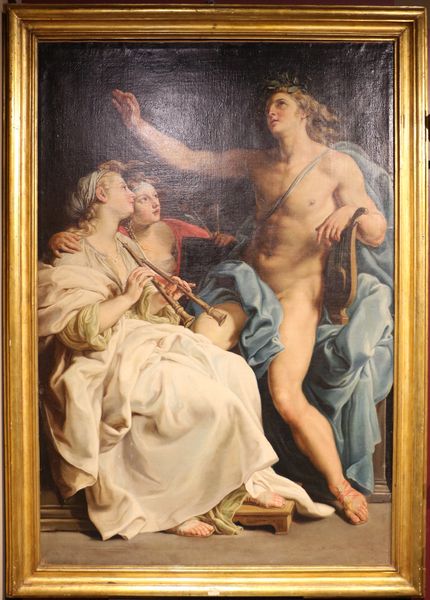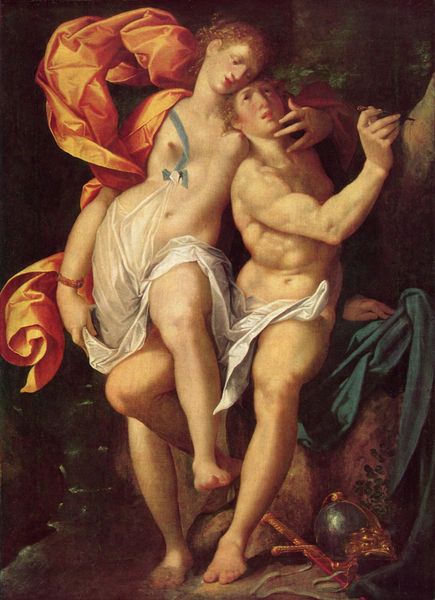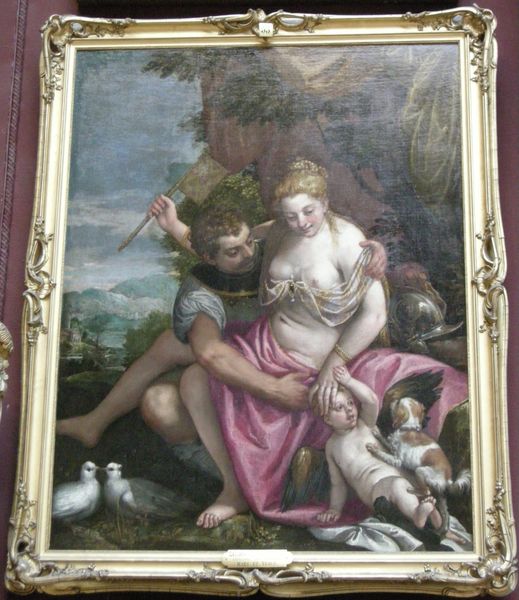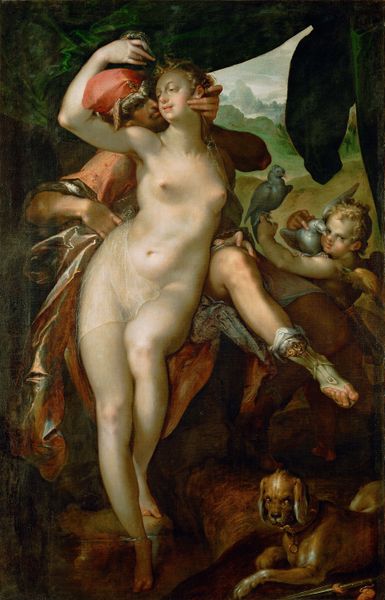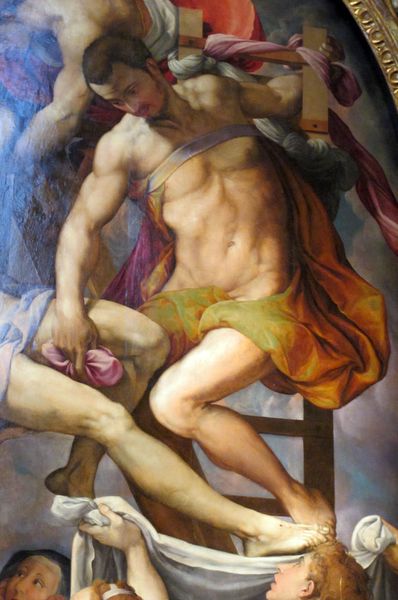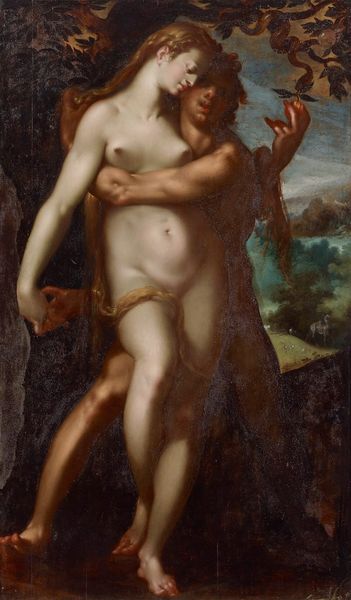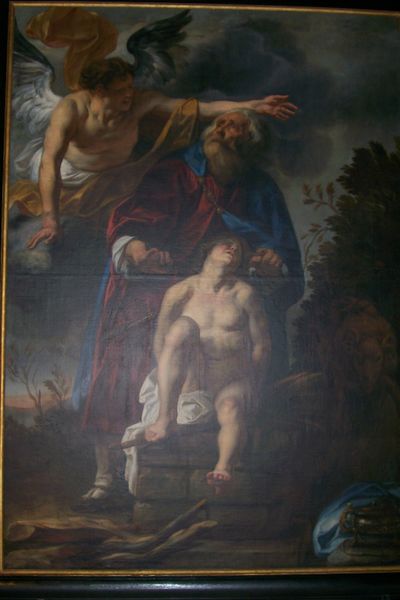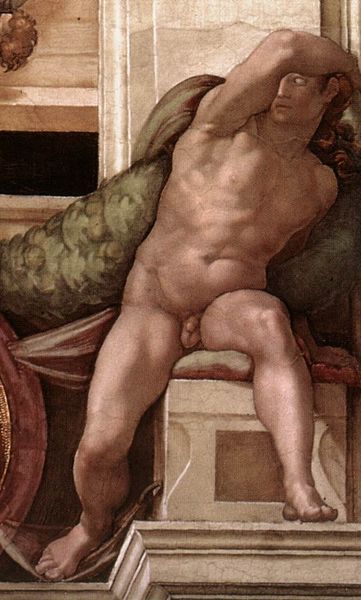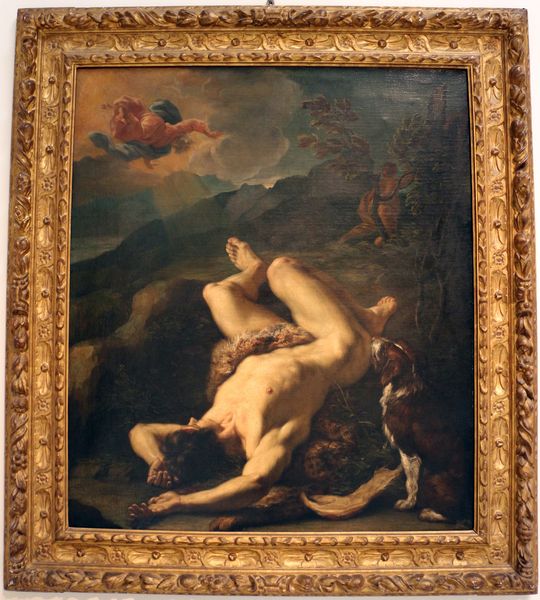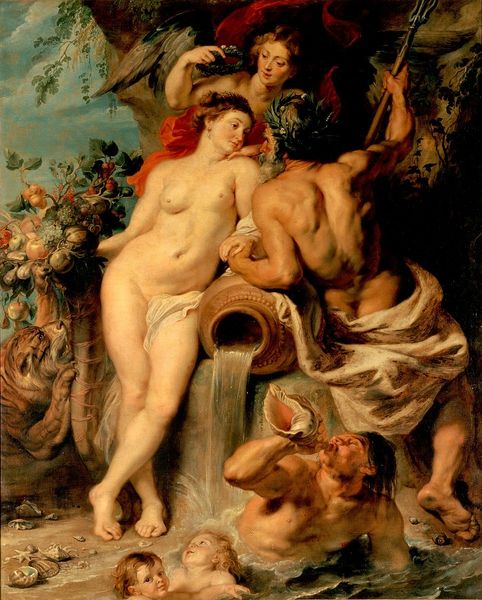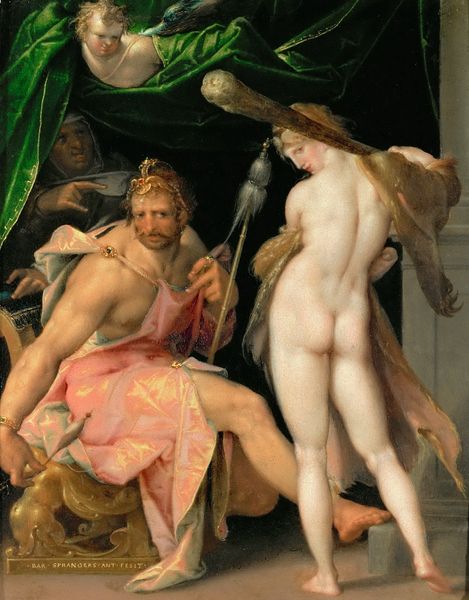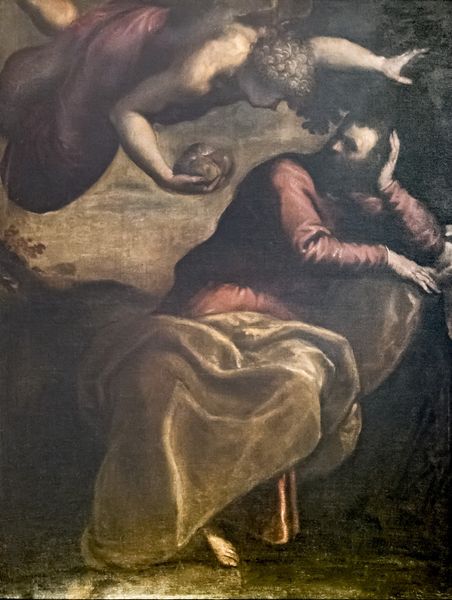
painting, oil-paint
#
portrait
#
allegory
#
painting
#
oil-paint
#
mannerism
#
oil painting
#
mythology
#
portrait drawing
#
history-painting
#
italian-renaissance
#
nude
#
portrait art
Dimensions: 179 x 131 cm
Copyright: Public domain
Bartolomeo Passerotti created this large canvas painting of Lucretia's Suicide sometime in the late 16th century. The artist built up the image using layers of oil paint, a flexible and forgiving material. Observe the smoothness of Lucretia's skin, achieved through blending and glazing, and the folds of the drapery, brought to life through highlights and shadows. While oil painting was well-established by Passerotti's time, the way he handles the material tells us about the social context in which he worked. The smooth surfaces and idealized form speak to the influence of classical art. The choice of oil on canvas was itself a sign of changing times. Previously, panel painting was more common, but canvas allowed for larger, more dramatic compositions. Consider the labor involved in producing such a painting, from preparing the canvas and grinding pigments to applying the paint with precision and skill. By considering both the materiality and the making of Passerotti's Lucretia, we appreciate its craftsmanship, while inviting us to question the traditional distinction between art and craft.
Comments
No comments
Be the first to comment and join the conversation on the ultimate creative platform.
